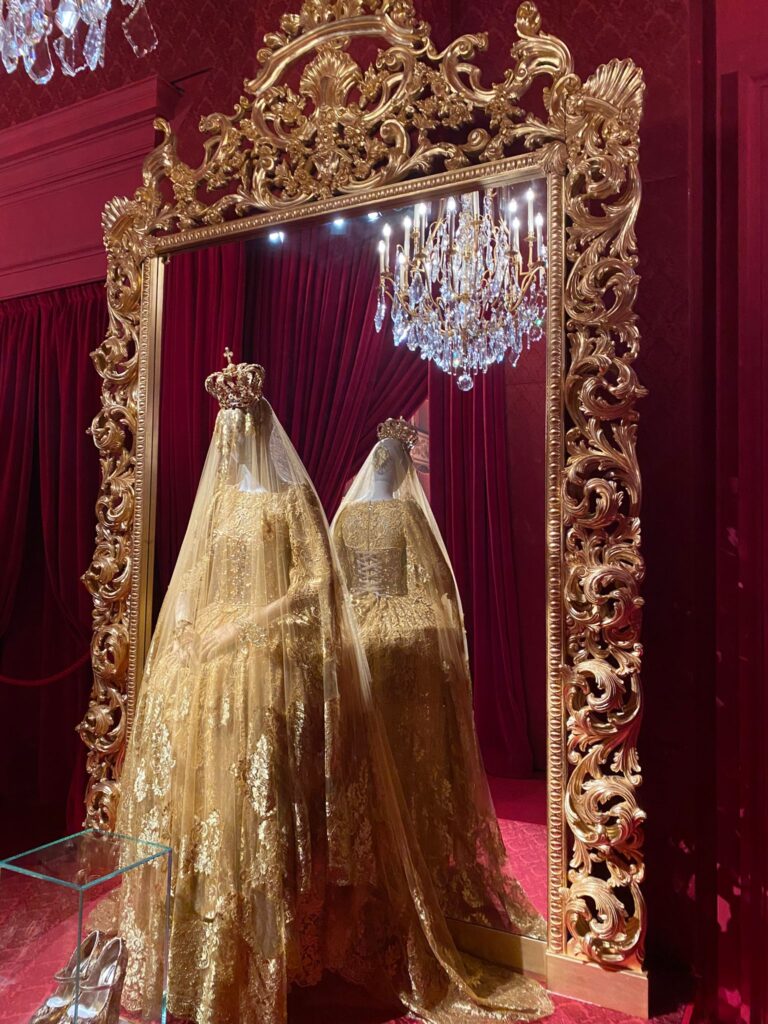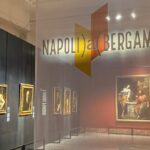Dal Cuore alle Mani. Dolce&Gabbana
From 7 April to 31 July 2024, at the prestigious venue of Palazzo Reale in Milan, an exhibition dedicated to fashion by Dolce&Gabbana, a prestigious Italian atelier that has always been linked to the cultural background of its origins, will be staged.
Edited by Florence Müller, art and fashion historian, and financed by IMG, the exhibition showcases some of the maison’s Haute Couture and Haute Couture and Fine Jewellery pieces, subdividing them into thematic areas in order to emphasise their artistic references and the “Italian-ness” of which they are bearers.
The exhibition is in fact a true tribute to Italian culture and the creative process of Stefano Dolce and Domenico Gabbana, from the heart, where ideas spring from, to the hands, the working tool.
A fundamental role as muse is undoubtedly played by art in all its forms: architecture, painting, sculpture, decorative arts, cinema, opera are proposed in the exhibition, in continuous dialogue with the sumptuous creations that draw inspiration from here.
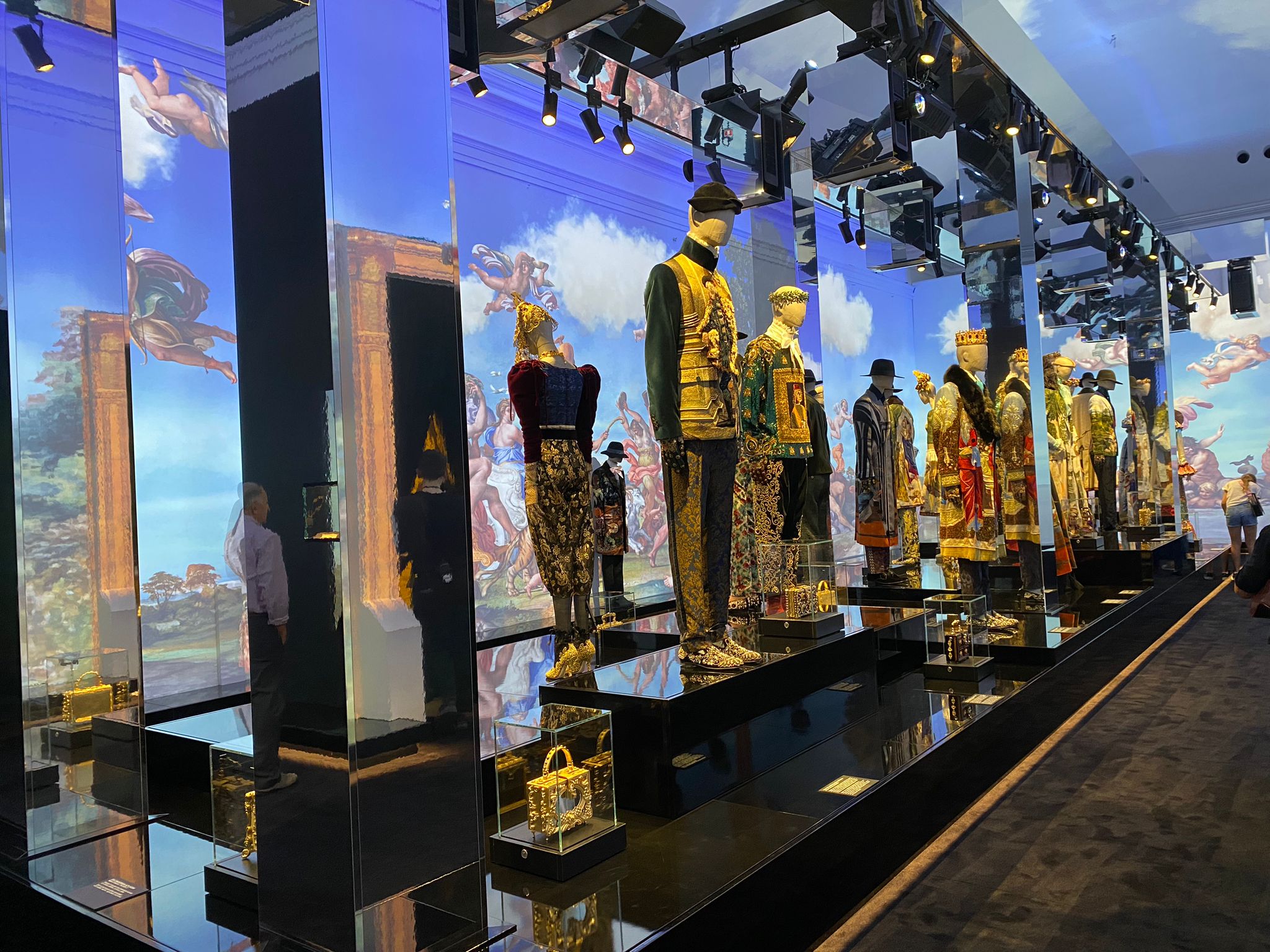
A true tribute to Italian culture in its multiple expressions and different regionalities, proposing different themed areas dedicated to the various collections, to best showcase the numerous suggestions.
With great attention paid to the scenographic layout, the clothes and accessories dialogue with the
masterfully set-up space, also thanks to the use of ad hoc lighting and background sound that vary with each setting.
The applied arts, furnishings and decorative apparatuses are an important source of inspiration for the designer couple.
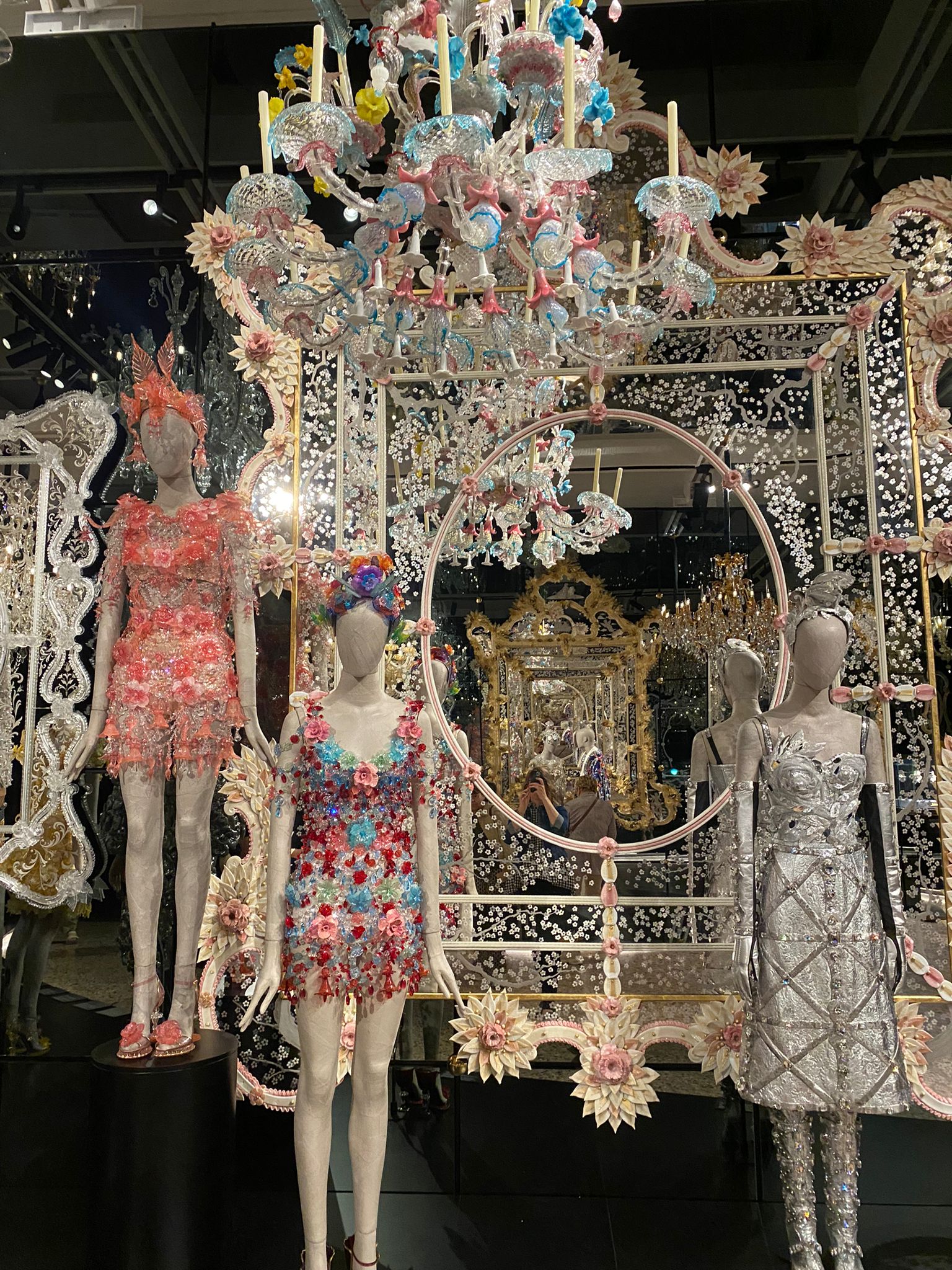
One of the first rooms is entirely dedicated to glass and its manufacture, with references to Murano glassworks and famous names such as Barovier and Toso.
Large mirrors with blown glass frames and imposing chandeliers, the fruit of the most specialised lagoon manufactures, not only serve as a backdrop, but
accompany the clothes on display here, which themselves become works of glass art, with floral and bell-shaped elements that recall those of the lighting above.
Even the heels of shoes, to echo this world even more pointedly, turn into glasses.
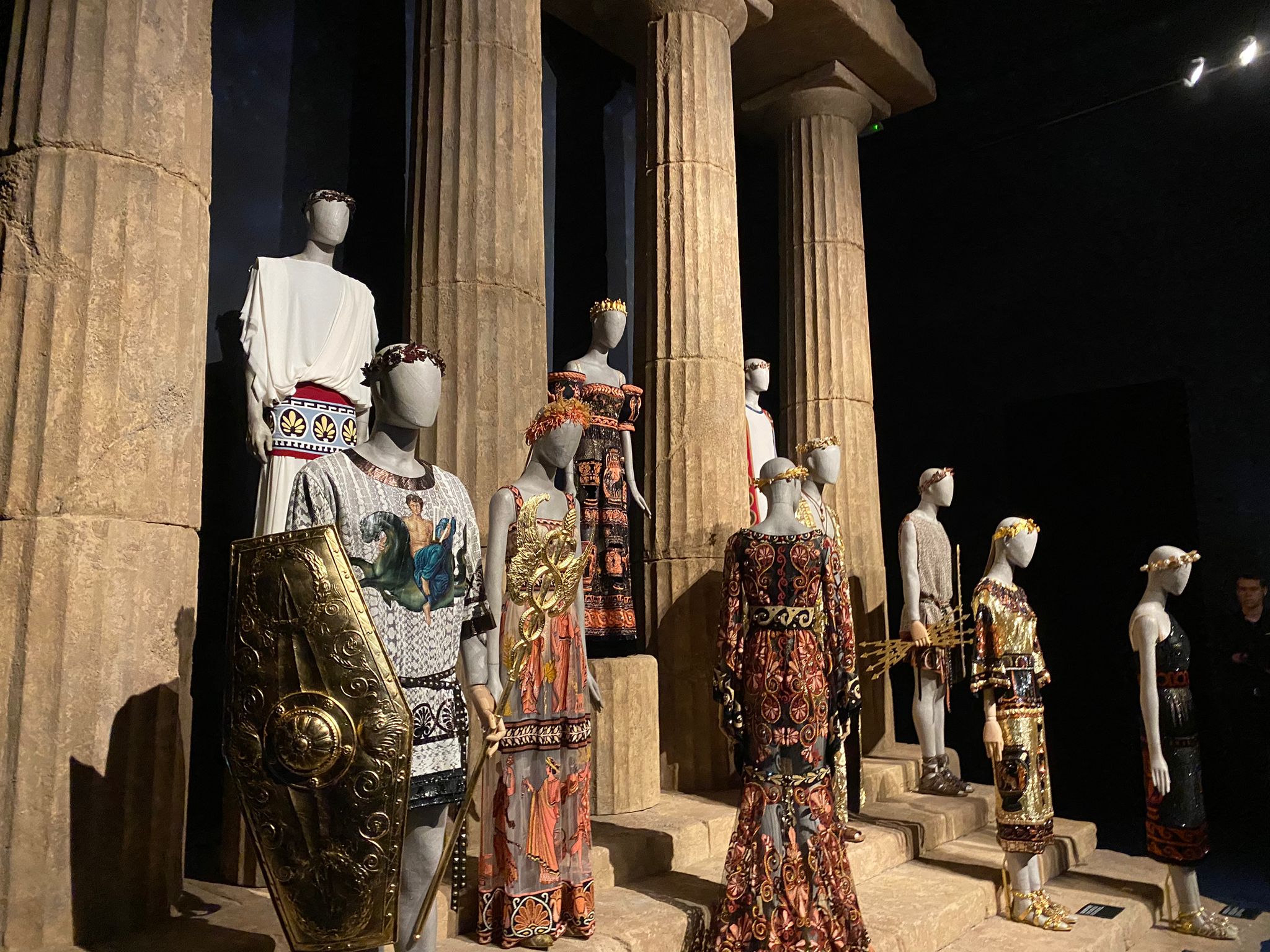
Sicily is certainly the region that plays a fundamental role in the style of the fashion house, from the antiquity of Magna Graecia, passing through Byzantine mosaics and the Baroque and the 19th century to contemporary times.
The Temple of Concordia in Agrigento is the backdrop for the presentation of the collection dedicated to the divinities and their depictions on Attic ceramic vases: earthy-coloured dresses adorned with figures that
echo those of vascular art, the interpenetrations are such that in one dress the sleeves themselves become the vases.
The cathedral of Monreale, with its mixture of Arab, Norman and Byzantine influences, is the inspiration for yet another collection, as are the mosaic decorations and cosmatesque floors decorated with volutes and flowers in the Venetian basilica of St Mark’s, which are echoed in the sequins and decorations that adorn the dresses.
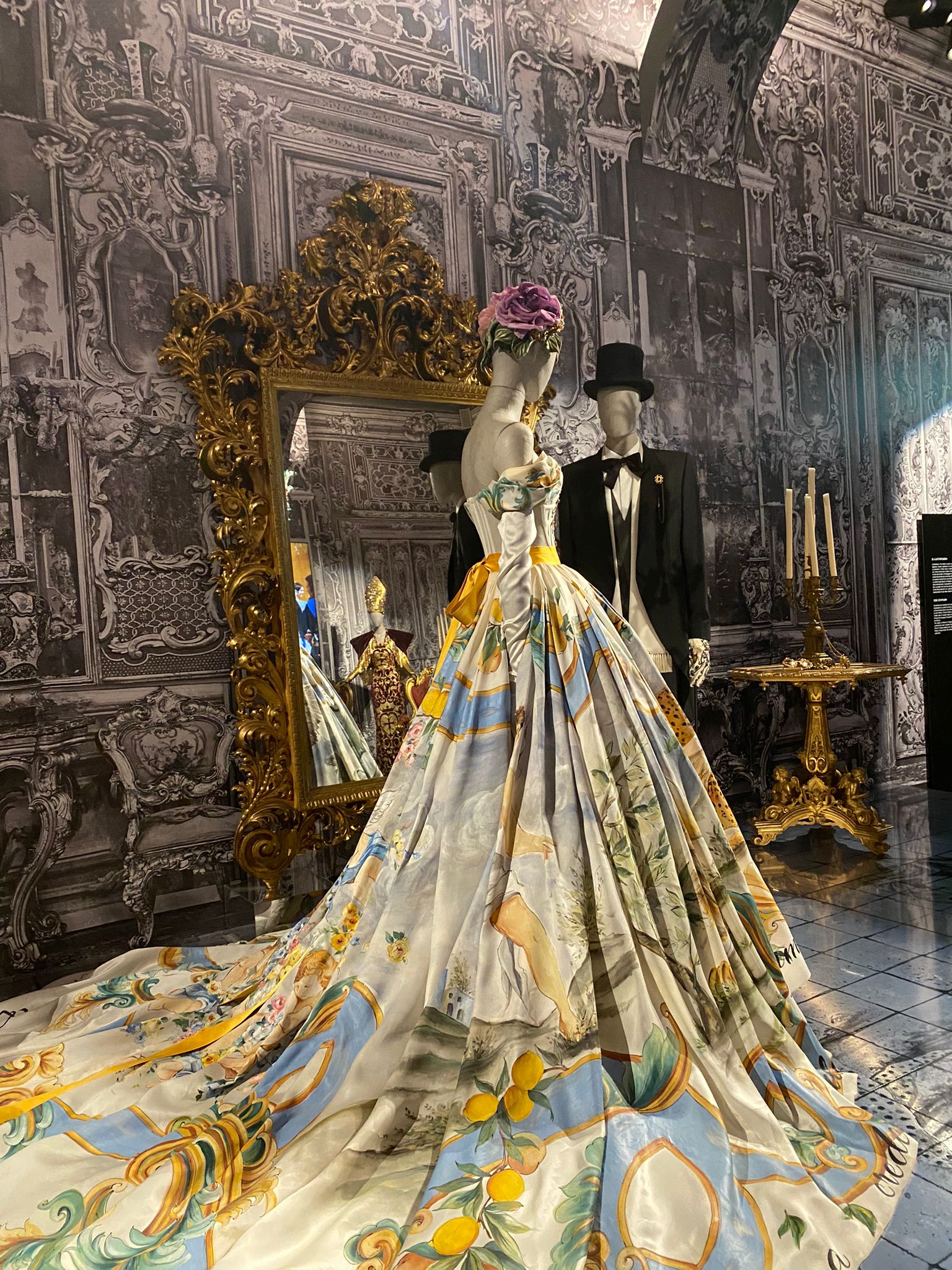
The Hall of Mirrors of Palazzo Gangi in Palermo has been reinterpreted in the room dedicated to Gattoparto, the famous film by Luchino Visconti, considered iconic by Domenico Dolce and Stefano Gabbana.
The architecture of the salon, richly decorated with
paintings and wood panelling and furnished with sumptuous Baroque furniture is suggested by the black and white print and further indicated by the inclusion of late 19th century neo-Baroque furnishings, which find an excellent contextualisation here and emphasise the sumptuous richness of the clothes.

The Sicilian Baroque returns to the fore later in the exhibition, in a true celebration of white Baroque, where fashion and interior decoration come together. Model of reference is Giacomo Serpotta (1656-1732), author of numerous stuccoes for as many religious buildings in the island’s capital.
The peculiarity of his works, made from a paste of lime, plaster and sand applied on a plaster and wire frame, is the ‘allustratura’, an innovative technique that consists in the final addition of a layer of mastic and
marble powder, to give a lustre that brings the sculptures closer to those made from the noble stone material. The apparent contradiction between the simplicity of white and the opulence and richness of the compositions, with the plastic figures in complex poses, is reworked by Dolce and Gabbana in their dedicated collection: clothes also with a baroque flavour, which come alive with cherubs and volutes rendered through horsehair and wadding covered in duchesses and mikado, re-proposing the triumph of Serpotta’s stuccoes.
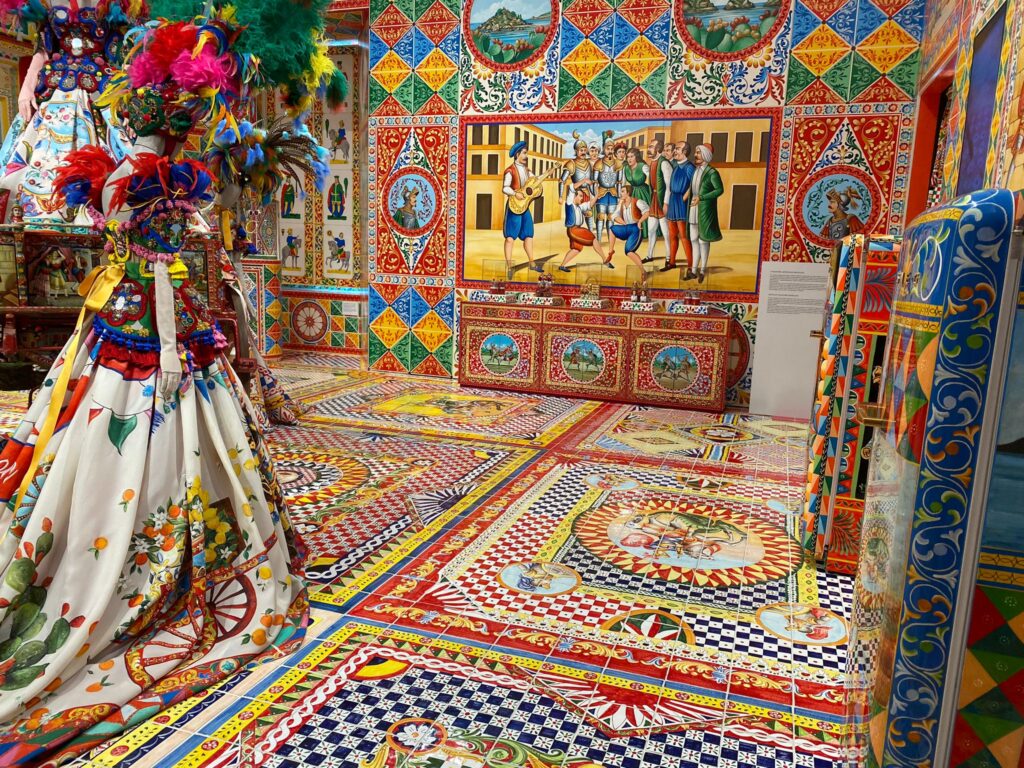
The Sicilian 19th century is recalled through that folkloristic and characteristic image that perhaps still today, more than any other, is synonymous with Sicilianity: the Sicilian cart and colourful majolica are used to decorate an entire room, in a riot of colours and figures.
Not only clothes, Dolce and Gabbana also decorate everyday objects with this theme, characterising themselves as true designers: Bialetti mochas and SMEG fridges are entirely decorated with this theme.


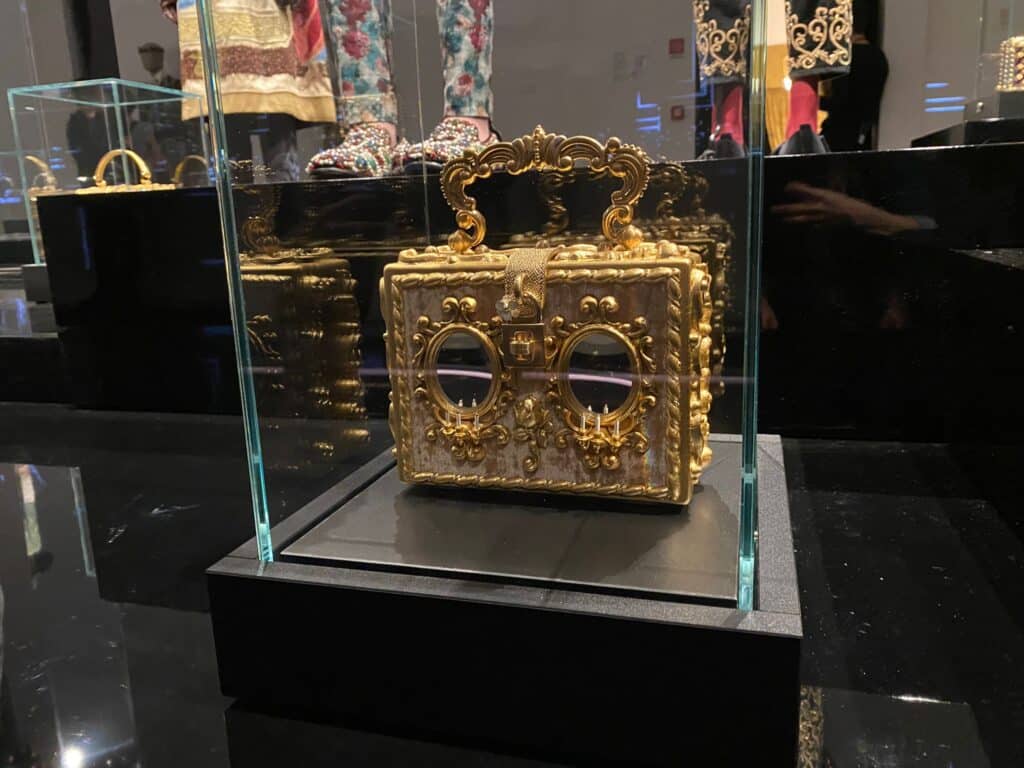
An entire section is dedicated to ‘Dressing Architecture and Painting’, a clear reference not only to the direct inspiration from the works of the greatest artists of the peninsula, whose works were directly embroidered on the fabrics, but also as an indication of the consideration the two designers have for tailoring.
Equal importance is given to the structure and decoration of their creations, and the work of making a dress must be considered equal to that of building it: first the architect designs the structure, which is then raised to leave room for the decorators and painters at a later stage.
Even the accessories proposed here show a clear adherence to art and in particular to the applied arts, with gilded purses that seem to take up parts of woodwork and stuccoes, within which there are clocks, mirrors with their candle-holding arms, or even purses that seem to be small cabinets, concealing treasures.
A last great celebration, again underlining Dolce&Gabbana’s link with the terriotory, is the final room, with a dress that pays homage to Milan: the hemispherical skirt evokes the dome of the Galleria Vittorio Emanuele, while recalling, with its golden macramé lace, the Madonnina that towers on the highest spire of the Duomo medeghino, a symbol so dear to the Milanese.
